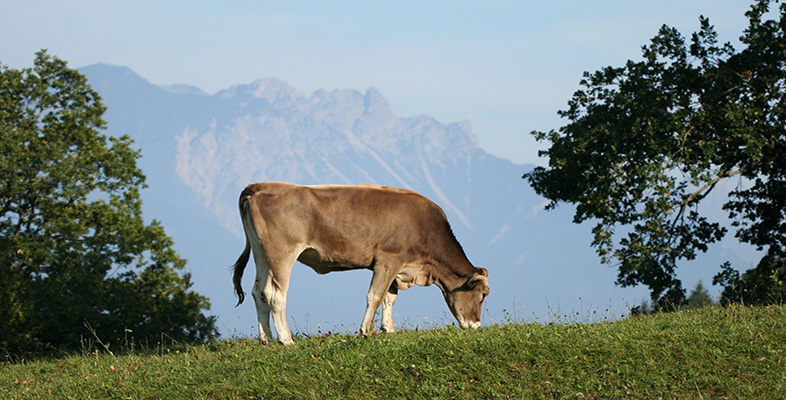5.2 Pseudo-ruminants
Animals in the third suborder of the Artiodactlya, the pigs, peccaries and (according to most authorities) the hippopotamuses (suborder Suina), use a slight variant on the ruminant method, and are often referred to as pseudo-ruminants. You might like to add this information to your version of Table 2. These animals do have stomachs with several chambers, similar to the true ruminants, and the first of these chambers houses colonies of cellulose-digesting microbes. However, the pseudo-ruminants do not gain maximum benefit from this arrangement because they do not regurgitate the food and 'chew the cud'. So they are not able to extract as much of the nutrition from a diet of leafy plant material as a similarly-sized ruminant.
Pigs and peccaries overcome the problem by eating a varied diet, not exclusively composed of leafy plant material. As well as leaves and grasses, they eat fungi, ferns, roots, bulbs and corms, and fruit (all of which are easier to digest) and even some animals such as insect larvae, earthworms and sometimes small vertebrates like frogs and mice, which they come across while rooting in leaf litter and moist earth. The hippopotamus has evolved a different strategy to counterbalance its less efficient digestion - it reduces its energy expenditure.
SAQ 11
Reread LoM pp. 99-102 and note down the aspects of the lifestyle of the hippopotamus that reduce its energy expenditure.
Answer
Hippos spend their days wallowing in tepid, shallow water, so they do not need to expend energy in keeping warm. In fact, their cellulose-digesting microbes produce so much heat that these mammals risk overheating. The water supports the weight of their bodies and they generally move around very little in the water (though the one pictured on p. 100 is obviously on the move). So, during the day they expend little energy. Their main energy requirement is at night, when they climb out of the water to feed on grass on the riverbanks, travelling perhaps a few kilometres each night.
So hippos have a relatively inefficient digestive system, compared with true ruminants, but also have a low energy requirement. The herbivorous mammals that have taken the low-energy lifestyle to its extreme are, of course, the sloths. You might like to reread LoM pp. 87-90 to remind yourself about these animals (and perhaps watch them again in the first few minutes of the TV programme).
